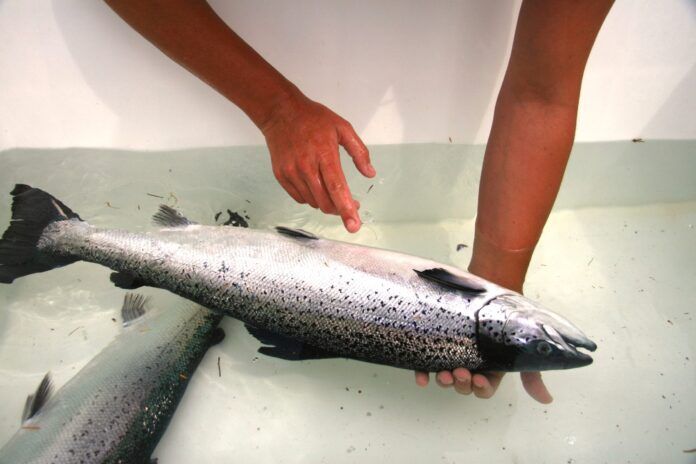New research published this month suggests closing Discovery Islands salmon farms reduced sea lice levels in the region.
However, BC salmon farmers say that conclusion is based on flimsy data, and not supported by other research.
Activist and researcher Alexandra Morton and SFU researcher Rick Routledge co-authored the paper, published this week in the Canadian Journal of Fisheries and Aquatic Sciences. They looked at more than 1,600 wild salmon sampled from 2020-2022. They found the average number of sea lice per juvenile salmon in the region declined 96% by 2022 and conclude it was most likely because the farms were closed.
Sea lice are a naturally-occurring parasite in the ocean that are found on several species of fish, but have become a central topic in the debate over salmon farms on the coast and whether or not they amplify risks to vulnerable out-migrating juvenile salmon.
In an email, Routledge says there is ample evidence from research during the past 20 years to expect to see sea lice levels in a region drop when a farm is removed. However, he points out the Broughton Archipelago region did not see a similar dramatic decrease after farms were removed, probably because of specific local factors including ocean currents and fish migration patterns.
The BC Salmon Farming Association says the paper has flaws in its methods and data reporting. The association says samples collected by independent biologists since 2017 show no connection between farms and lice loads on passing juvenile salmon.
“Professional biologists have consistently measured the abundance of sea lice on wild juvenile salmon at the same locations for the past seven years in the Discovery Islands region,” says association Executive Director Brian Kingzett. “The data shows that the sea lice abundance on juvenile wild salmon in 2022 was about 50% less than in 2020; however, that was the case both before they reached salmon farms and after they passed by salmon farms. Furthermore, 2022 sea lice levels were similar to 2017 and 2018 when all farms were active in the Discovery Islands region.”
Routledge says other studies done in the region finding no link, including work published by Fisheries and Oceans Canada, didn’t take fish migration patterns or ocean currents into account, unlike his latest research.
He says his finding is crucial because populations of Fraser sockeye salmon and Southern BC chinook salmon are now formally listed as at risk of imminent extinction.
“Two such populations of Fraser sockeye came near to extinction in the early 1900s,” he says. “One took 80 years before it showed tentative signs of rebuilding, and then collapsed again. The other one never did rebuild to anywhere near its former abundance. Hence, at best, these imminent extinction events may well have consequences lasting for several human generations, and at worst, may be irreversible.”




